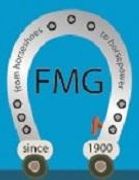
Inclement weather can quickly make driving conditions hazardous. When wet leaves fall onto roads, they may cause problems that affect tires and vehicle handling, increasing the likelihood of being in a collision. Fortunately, when you know how to navigate this situation, you can reduce your risk of accidents and injuries. Here's what you need to know about driving safely on wet leaves and roads.
What Dangers Do Wet Leaves Present?
When leaves fall onto roads, they may form a thick blanket that obscures lane demarcations and crosswalks, putting you at a greater risk of colliding with other vehicles or having an incident with pedestrians. They may also cover up potholes. If you're unable to avoid these depressions, it could result in flat tires and blowouts.
Leaves have a waxy coating that makes their surfaces slick when wet. Since they don't absorb water well, the moisture sits on top of the leaf as it lies on the ground. The pooling water can cause you to lose control of your vehicle while making sharp or quick turns. This is because tires lose traction and struggle to grip the pavement, causing you to skid. If you're already traveling at a high speed and suddenly need to break, wet leaves can make this challenging. You may end up sliding and having difficulty stopping in time to avoid hitting obstacles.
How Do You Drive Safely Over Them?

When you notice wet leaves, reduce your speed. However, don't slam on the brakes, as this can cause skidding or sliding. Increase your stopping distance so that you'll have plenty of time to decelerate in the event of upcoming hazards or obstacles.
Tires have tread patterns featuring unique grooves. These are designed to make secure contact with the road and displace moisture beneath them. Check the tread once a month by putting a penny face-down into one of the divots. If you can see most or all of Lincoln's head, your tread is too shallow, and you need new wheels.
Check each tire's pressure, as well, since proper inflation helps them retain traction on the road. Connect a digital gauge to each valve, and compare the reading to the manufacturer-recommended pounds per square inch in your owner's manual. Add air at a filling station as necessary.
When you need new tires for your vehicle, turn to Fort Mitchell Garage. We provide auto repairs and body work to drivers throughout Covington, KY, and the Cincinnati area. Whether you need an oil change, transmission repair, or new paint job, our team of technicians will have you back on the road in no time. Call (859) 431-3326 to request an auto service quote, and visit our website to learn more about how we can keep your vehicle fully functional and safe.
About the Business
Have a question? Ask the experts!
Send your question

